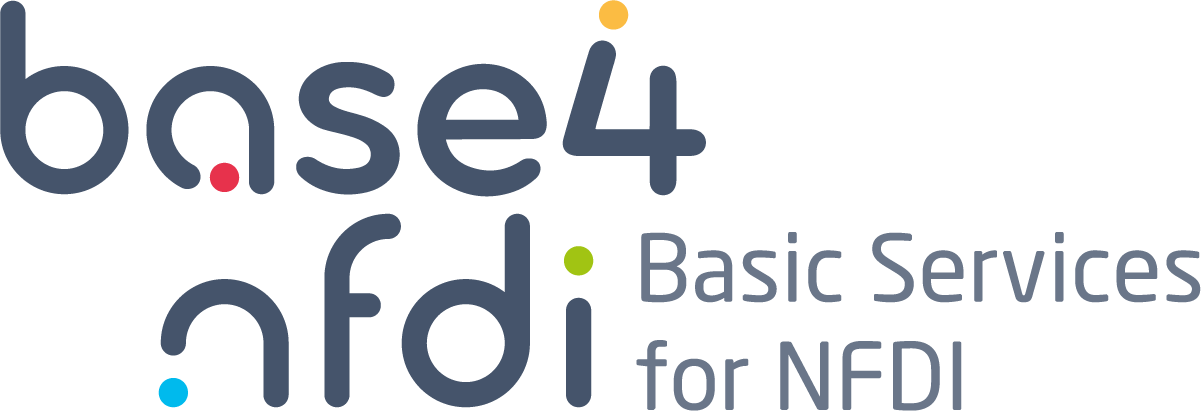Frequently Asked Questions (FAQ)
Base4NFDI is the joint initiative of all 26 NFDI consortia (not a consortium itself) and supports the development of user-driven and quality-assured basic RDM service development. Base4NFDI provides the framework for defining potential basic services, user-driven requirements analysis, stepwise development for integrating and ramping-up basic service candidates. It will establish a NFDI-wide basic service portfolio, monitoring and evaluation,consensus building, via the transparent allocation of flexible funding to support the services to get off the ground.
Anyone in need of RDM tools can use the basic services. The intended target group (e.g. developer vs. researcher, German or European) depends on the individual service. NFDI membership is not required to use a basic services.
To evaluate and develop potential basic services, Base4NFDI has created a streamlined process to identify, develop and to mature a service. To give input for basic services or participate in basic service development, individuals need to be part of an organization that is member of the NFDI. NFDI membership is free of charge and can be applied for here.
You can find the latest status of the services on their project pages. Start here: https://base4nfdi.de/projects .
An incubator is part of an agile work plan to speed up the integration of a basic service within targeted parts of the NFDI community. It is a structured work package in interaction between NFDI communities and a basic service (i.e. implementing or connecting to CAAI/infrastructure proxy in case for IAM) that typically lasts up to 6 months.
Both will be closely interlinked and aligned consistently.
Key personnel is present in both endeavours to ensure consistency.
Long-term operational models should be included in the planning for the integration / preparation for roll-out phases by the individual services. Base4NFDI supports, e.g. with business model workshops.
The central infrastructure of the NFDI is an open question.
Base4NFDI services are owned by the respective member institutions. So they can decide if they want to board the EOSC train or not. It might make more sense for some services than others. European connectivity is always encouraged in EOSC and otherwise. See our EOSC page here .
